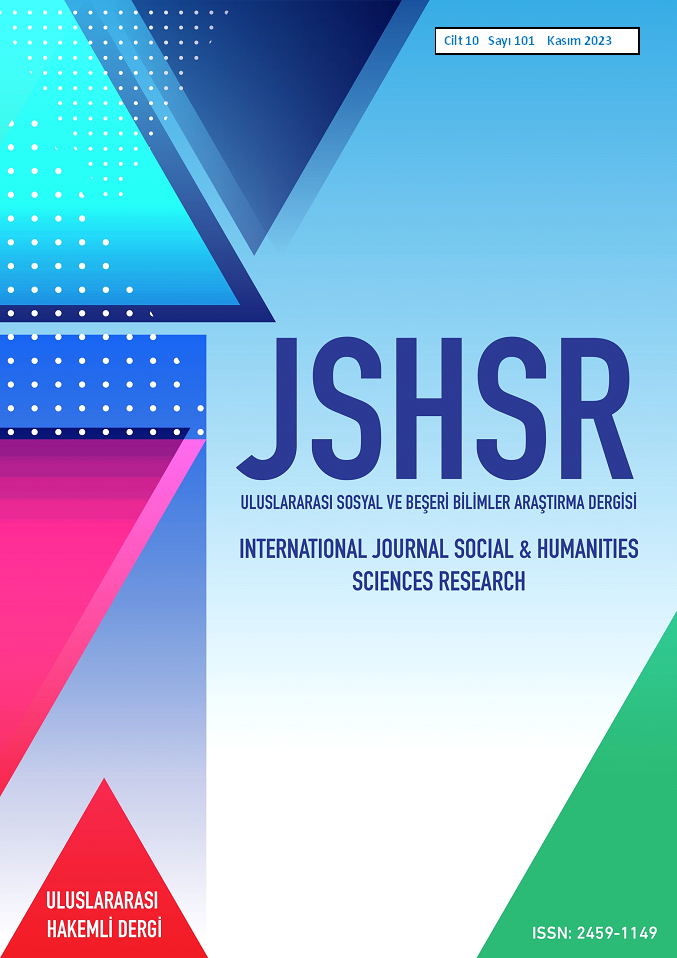Airline Cabin Crew Employees and Quiet Quitting: An Evaluation from the Perspective of Cabin Chiefs
DOI:
https://doi.org/10.5281/zenodo.10253445Keywords:
Quite Quitting, Civil Aviaion, Cabin Attendant, Airline CompanyAbstract
Quiet quitting is a negative organizational behavior that occurs in businesses. It is well known that employee behaviors have a direct impact on the productivity and profitability of businesses. Therefore, eliminating the occurrence of quiet quitting in businesses will motivate and satisfy employees, thus ensuring that the service quality of businesses is maintained at a high level. In this study, findings obtained from cabin supervisors working in an airline company in Antalya using the semi-structured interview technique, one of the qualitative research methods, are discussed. According to the results of the study quite quitting can arise among employees for various reasons. Accordingly, quite quitting can occur due to reasons such as the absence of regular working hours, not being able to allocate enough time to personal life, long duty shifts, lack of recognition for achievements, failure of aspiring cabin supervisors to become supervisors, low wages, strict enforcement of company rules, and not letting mistakes go unpunished. Some employees who engage in quite quitting tend to avoid taking on responsibilities during flights. It is observed that some of them have low motivation and obtain medical certificates to avoid flying
References
Aktunç, İ. (2013). Kabin Memuru Tanımı, Türk Hava Yolları Uçuş Eğitim Başkanlığı Cabin Interphone Dergisi, 1, 9-10.
Arar, T., Çetiner, N. & Yurdakul, G. (2023). Quiet Quitting: Building a Comprehensive Theoretical Framework, Akademik Araştırmalar ve Çalışmalar Dergisi, 15(28), 122-138.
Curtisa, S.; Geslerb, W.; Smitha, G. & Washburnb, S. (2000). Approaches to Sampling and Case Selection in Qualitative Research: Examples in The Geography of Health, Social Science & Medicine, (50), 1002.
Echterhoff, W., Poweleit, D., Schindler, U., & Kreuz, A. (1997) Innere Kündigung–Überwinden von Motivationsblockaden in Wirtschaft und Verwaltung, Zeitschrift Führung + Organisation, (1), 33–37.
Gallup (2022). Is Quiet Quitting Real?, https://www.gallup.com/workplace/398306/quiet-quitting-real.aspx
Granger, B. (2022). “Quiet quitting: the latest workplace trend to combat burnout”. Qualtrics. https://www.qualtrics.com/blog/quiet-quitting/
Gupte, A. (2022). Decoding Quiet Quitting, https://www.linkedin.com/pulse/decoding-quiet-quitting-ashlesha-gupte
Hiltunen, H. (2023). Quiet Quitting Phenomenon in Finnish Aviation Industry. [Bachelor Thesis]. Haaga-Helia University of Applied Sciences Degree in Aviation Business.
Hitchins, S. (2022). Quiet Quitting is Dividing the Workforce. Here’s How to Bring Everyone Back Together. Entrepreneur. https://www.entrepreneur.com/leadership/quiet-quitting-is-taking-over-the-workforce-heres-how-to/434560
Hymes, K. (2021). The Great Resignation’ Misses the Point. www.wired.com/story/great-resignation-misses-the-point
Kumar, T. S. (2022). How to Handle Notice Period in Organization & Emotional Balancing During Resignation & Finding New Job. Case Study on Quite Quit, Shodhshauryam, International Scientific Refereed Research Journal, 5(5), 9-12.
Pearce, M. (2022). Gen Z didn’t coin ‘quiet quitting’ Gen X did. https://www.latimes.com/entertainment-arts/story/2022-08-27/la-ent-quiet-quitting-origins
Pandey, E. (2022). The staying power of quiet quitting. https://www.axios.com/2022/09/21/quiet-quitting-gen-z-work-jobs-minimum
Ratnatunga, J. (2022). Quiet Quitting: The Silent Challenge of Performance Management, Jamar, 20(2), 13-20.
Robinson, A. (2022). Quiet Quitting: How to Prevent & Combat it at Work. https://teambuilding.com/ blog/quiet-quitting
Scheibner, N. & Hapkemeyer, J. (2013). Innere Kündigung als Thema in der Organisationsentwicklung. Organisationsberatung, Supervision, Coaching, 20(4), 461-472.
Schroth, H. (2019). Are You Ready for Gen Z in the Workplace?. California Management Review, 61(3), 5-18.
Seçer, B. (2011). İş Güvencesizliğinin İçsel İşten Ayrılma ve Yaşam Doyumuna Etkisi, ISGUC The Journal of Industrial Relations Human Resources, 13(4), 43-60.
SHGM (2023). Havacılık Personeli. https://web.shgm.gov.tr/tr/havacilik-personeli/2138-kabin-memuru
Srivastava, S., & Kanpur, R. (2014). A Study on Quality of Work Life: Key Elements & It’s Implications, IOSR Journal of Business and Management, 16(3), 54-59.
Tong, G. C. (2022). Is ‘Quiet Quitting’ A Good Idea? Here’s What Workplace Experts Say. Make It. https://www.cnbc.com/2022/08/30/is-quiet-quitting-a-good-idea-heres-what-workplace-experts-say.html
Tümüklü, A. (2000). Eğitim Bilimi Araştırmalarında Etkin Olarak Kullanılabilecek Nitel Bir Araştırma Tekniği: Görüşme, Kuram ve Uygulamada Eğitim Yönetimi, 24, 547.
Xu, X. (2020). Examining an Asymmetric Effect Between Online Customer Reviews Emphasis and Overall Satisfaction Determinants, Journal of Business Research, 106, 196-210.
Yıldız, D. (2023). Örgütlerde İşgören ve İşverenlerin Güncel Sorunu: Sessiz İstifa, Social Sciences Research Journal, 12(6), 795-802.
Youthall (2022). Sessiz İstifa. https://www.youthall.com/tr/company/ebooks/sessiz-istifa
Downloads
Published
How to Cite
Issue
Section
License
Copyright (c) 2023 INTERNATIONAL JOURNAL OF SOCIAL HUMANITIES SCIENCES RESEARCH

This work is licensed under a Creative Commons Attribution 4.0 International License.


